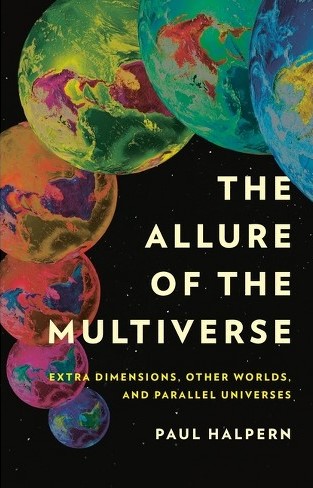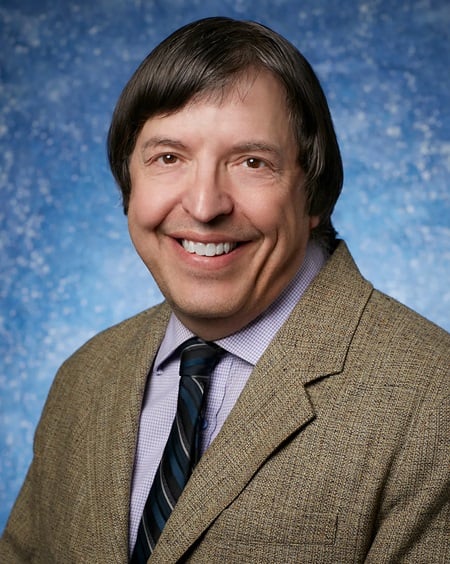The multiverse may be a cool (and convenient) concept for comic books and superhero movies, but why do scientists take it seriously?
In a new book titled "The Allure of the Multiverse," physicist Paul Halpern traces why many theorists have come to believe that longstanding scientific puzzles can be solved only if they allow for the existence of other universes outside our own --- even if they have no firm evidence for such realms.
It's easy to confuse the hypotheses with the hype, but Halpern says there's a huge difference between the multiverse that physicists propose and the mystical realm that's portrayed in movies like "Doctor Strange in the Multiverse of Madness."
"Some people accuse scientists of trying to delve into science fiction if they even mention the multiverse," Halpern says in the latest episode of the Fiction Science podcast. "But the type of science that people are doing when they talk about the multiverse is real science. It's far-reaching science, but it's real science. Scientists are not saying, 'Hey, maybe we can meet another Spider-Man and attack Kingpin that way.'"
https://open.spotify.com/episode/61A1KvdQpozlpPWhzRP8ZH?si=2pvlm0u2Rr-jWQRTK7OKUQ
On one level, the concept of a multiverse --- encompassing the paths that the universe takes as well as the roads not taken --- addresses our instinct to wonder "what if" (which happens to be the title of a Marvel multiverse comic-book series). For example, what if Marty McFly's mother missed out on meeting his father in "Back to the Future"?
"This whole idea of 'which world is better, which world is worse' --- this is something people think about a lot, and inspires notions like the multiverse, where you imagine what would have happened if the universe developed differently, what would have happened if history was different," Halpern says. "It's a very popular question for us, and could well stem from our survival instincts in terms of planning."
Multiplicity of multiverse motivations
For physicists, however, the multiverse isn't a matter of wondering where they'd be if they went for an MBA rather than a Ph.D. Instead, the idea pops up in several scientific contexts. Quantum mechanics gave rise to deep questions about how the act of observation affects the reality being observed. The effort to answer those questions led some physicists to theorize that reality splits into different versions that go their separate ways, in line with what's now known as the Many Worlds Interpretation.
On a different front, physicists have tried to reconcile the seemingly inconsistent implications of quantum mechanics and general relativity by proposing the existence of extra dimensions. These physicists say the inconsistencies can be mathematically resolved if there are, say, six or seven undetected dimensions in addition to our universe's four-dimensional spacetime. A field of physics known as brane cosmology speculates that other realms of existence (or "branes," short for membranes) could exist in parallel to our own realm.
And then there's the Big Bang. To explain what they're observing on the far frontiers of our accelerating universe, astrophysicists have proposed that the cosmos got its start in a bubble burst of inflation. Some have followed the trail even further, concluding that there's no reason why our universe couldn't spawn a multitude of bubble universes with different properties. (Sci-fi author Gregory Benford worked the idea into a 1998 novel titled "Cosm.")
Where's the evidence?
In his book --- and in our podcast --- Halpern traces the development of these theories, as well as efforts to track down evidence showing that a particular conception of the multiverse is correct.
Scientists have searched for traces of the multiverse at work in the temperature variations of cosmic microwave background radiation --- the so-called afterglow of the Big Bang. They've tried to detect primordial gravitational waves that could tell them about the history of cosmic inflation. They've looked for signs of gravitons at the Large Hadron Collider, or small-scale variations in the force of gravity that could point to interactions with extra dimensions.
So far, these scientists have struck out. Some have even given up, after concluding that the multiverse hypothesis is an unprovable "theory of anything" and therefore shouldn't be considered science.
Despite the strikeouts, Halpern hopes physicists will keep on swinging.
"The argument against even considering multiverse models is the lack of observational evidence," he says. "However, there are many new tools in science that could be used to probe what happened at the beginning of our universe, right after the Big Bang."
Fine-scale measurements of polarization patterns in the cosmic microwave background radiation could still turn up evidence of "scars" left behind by collisions with other bubble universes. There's still a chance that gravitational-wave surveys could reveal evidence of interactions with other universes.
"And finally, there's a burgeoning area of simulating cosmology, and looking to see what models suggest the production of other universes," Halpern says. "That wouldn't be experimental proof, but that would provide an important clue as to whether or not you can have our universe with what we believe is an initial state of ultra-rapid expansion called inflation."
So, is the multiverse for real? Halpern is optimistic that scientists will eventually find ways to answer that question, even though they've found nothing but dead ends so far. "I look at the history of physics, and there are so many things that started with false starts," he says.
Halpern points out that it took decades for physicists to find sufficient evidence for the existence of dark matter and dark energy, black holes and gravitational waves --- long-shot efforts that led to Nobel Prizes.
"We have to be patient sometimes with theoretical physics and its predictions," he says.
Head on over to the original version of this posting on Cosmic Log to get Paul Halpern's reading recommendations for multiverse mavens. For still more about the multiverse, check out our previous Fiction Science interview with string theorist Brian Greene --- plus a doubleheader with physicist Michio Kaku talking about "The God Equation" and "Quantum Supremacy."
My co-host for the Fiction Science podcast is Dominica Phetteplace, an award-winning writer who is a graduate of the Clarion West Writers Workshop and currently lives in San Francisco. To learn more about Phetteplace, visit her website, DominicaPhetteplace.com.
Stay tuned for future episodes of the Fiction Science podcast via Apple, Google, Overcast, Spotify, Player.fm, Pocket Casts and Radio Public. If you like Fiction Science, please rate the podcast and subscribe to get alerts for future episodes.
 Universe Today
Universe Today


